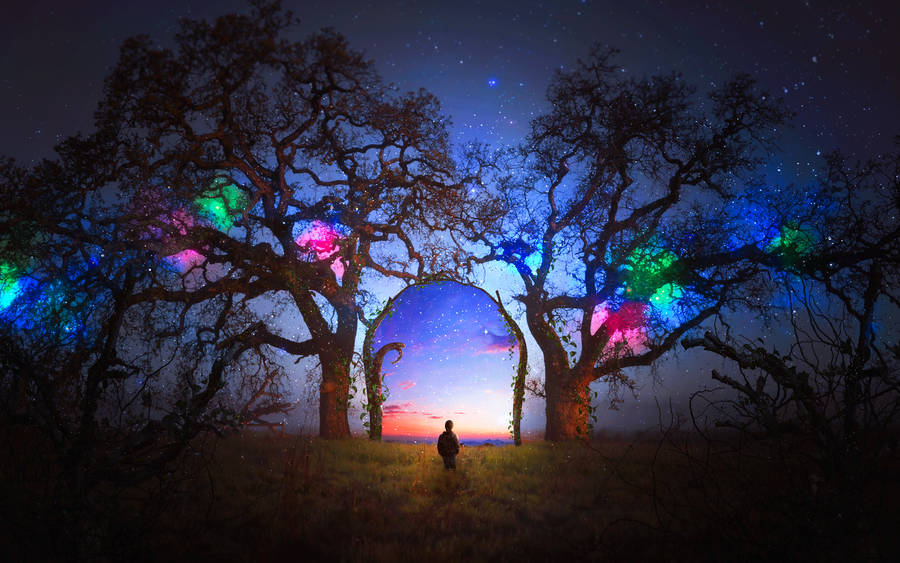
Ten in Sanskrit is dashan (dasan).
Ten is the first double digit number formed by the coming together of one and zero. The zero stands for nirguna Brahman. The one stands for both Saguna Brahman and the individual Atman. In the number 10 thus we find a very deep symbolic significance. The number symbolically represents the incarnation of God, the conscious and willful coming together of the transcendent and the immanent, of the mortal and the immortal, with God manifesting himself fully in earthly form with his splendor and energies. In a less significant way it also symbolizes a self realized yogi who has experienced Brahman or Atman in human body. An awakened being is complete and different from an ordinary mortal because she has the internal awareness of 10 while the latter has only that of 01.
Durga is depicted as having eight or ten hands. These represent eight quadrants or ten directions in Hinduism. This suggests that she protects the devotees from all directions.
The eminent Shankaracharya classified renunciants into ten categories, giving
them names based mostly on natural and geographical variety.
The Rig Veda Samhita contains ten books of hymns to various deities.
The tenth Sikh Guru Gobind Singh wrote dasam Granth (Tenth Granth).
The villain in the Ramayana was RavaNa. He had ten faces. Therefore he is also
known as Dasakantha the ten-headed or the ten necked one. He is said to be an embodiment of dashendriya: five organs of knowledge and five motor organs.
Lord Rama is knownas dasaripu as he killed the ten headed demon king Ravana in the battle. The story is probably an allegory of a egoistic man (01) trying to compete with an incarnation (10) with the strength and knowledge of ten egoistic individuals but without the aid of the inner self (one) and God (zero).
The father of the epic hero Rama was called Dasharatha because he had ten chariots which went along ten directions which consist of the four cardinal directions (East, West, North, and South), the four diagonal ones (Northeast,Southeast, Northwest, and Southwest), as well as the upward and downward directions. He is said to have had full control over his ten as he had control over the ten horses.
In the Hindu framework the Divine manifests itself periodically here on earth
for the welfare of human kind. According to Hindu tradition Lord Vishnu's incarnations are ten in number of which nine have already taken place and the tenth is yet to come. Elevation of the humblest, the fish, the most ignored, the tortoise, and the man's headstrong antagonist, the boar, first three of Vishnu's ten incarnations, to the status of the Supreme Being, not only generated reverence for all beings but also helped cosmic unity and equilibrium.
The tenth and last day of the Navaratra festival is called Dassara
(Dusshera). It is dedicated to the Mother Goddess in some parts of India or taken
to celebrate Rama's victory (Vijayadashami) in other region.
The Sanskrit writer Dananjaya (10th century C.E.) wrote a work on theater theory
entitled Dashar√pika. Here he listed ten kinds of dramatical works. (Recall
that categorization is a science in which classical Hindus excelled.)
It's possible to continue long...
For ex., in Buddhism: taken as a group of ten fingers, the hands represent the Five Buddhas (right) and their consorts (left), the ten symbolic prongs of the vajra, the ten perfections or the ten virtues...
The Ten Commandments (Decalogue) accepted by Judaism, Christianity and Islam...
Realy, ten is perfect! HAPPY 2010!


